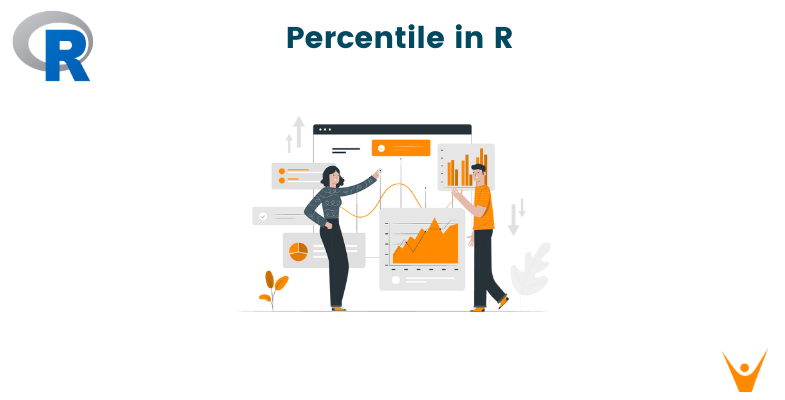Multicollinearity is a major challenge in statistical modeling, especially in logistic regression. The Variance Inflation Factor (VIF) is a useful instrument for identifying and controlling multicollinearity. In this article, we will explore the idea of VIF in R, its importance, and how to use it to improve the generalization of your models.
What is Multicollinearity?
When two or more independent variables in a regression model have a high degree of correlation, it is known as multicollinearity and can result in unstable coefficient estimates. Multicollinearity can be a serious concern in regression analysis.
High levels of correlation between independent variables make it difficult for the model to differentiate between the unique effects of each variable, which results in unclear and unreliable coefficient estimates. Consequently, this impacts the interpretability and predictive capabilities of the model.
What is VIF in R?
Variance Inflation Factor (VIF) in R is a measure that quantifies how much the variance of an estimated regression coefficient increases when your predictors are correlated. To put it simply, VIF determines how severe multicollinearity is by calculating the amount that correlation with other predictors causes the standard error of the estimated coefficient to increase.
Values from the VIF are very easy to interpret. There is no correlation between the predictor and the other variables when the VIF is 1. This is an indication of no multicollinearity. A VIF value of more than five or ten is generally regarded as problematic since it indicates a high degree of correlation that could affect the accuracy of the regression coefficients.
In a variety of domains, starting from the identification of flower species to the calculation of vehicle mileage, VIF offers a variety of insightful information that enables data scientists and analysts like us to make well-informed decisions and create predictive models, that are more precise and unbiased.
Detecting Multicollinearity with VIF in R
Now that we know how important VIF is, let's look at how to use it to find multicollinearity in R, especially when it comes to logistic regression.
1) Importing necessary libraries: The car package is commonly used for VIF calculations. Before we start, we need to ensure that the package is installed and loaded in our R environment.
install.packages("car")library(car)
2) Preparing the Data: Let's load the iris dataset into our environment and fit a logistic regression model into it.
data(iris)
iris$setosa_binary <- ifelse(iris$Species == "setosa", 1, 0)
model_iris <- glm(setosa_binary ~ Sepal.Length + Sepal.Width + Petal.Length + Petal.Width, data = iris, family = "binomial")
3) Calculating VIF: Next, calculate the VIF for each predictor using the vif() function.
vif_values_iris <- car::vif(model_iris)
The resulting vif_values_iris object will contain the VIF values for each predictor. We can then analyse these values to identify variables with high multicollinearity.
Interpreting VIF in Logistic Regression
The interpretation of VIF in logistic regression is similar to that in linear regression. However, the focus is on the impact of multicollinearity on the odds ratio estimates.
- Impact on Odds Ratios: In logistic regression, we're trying to predict things like whether a flower is a certain type or not based on its features. The odds ratio is like a tool that helps us understand how a change in one feature affects the chance of our prediction being right. But, if our features are too similar (multicollinearity), it can mess with this tool. Multicollinearity can lead to inflated standard errors of the coefficients, resulting in wider confidence intervals for the odds ratios.
- Addressing Multicollinearity: If you encounter high multicollinearity in your model using VIF, you can employ several strategies to address the issue..
- Variable Removal: Consider removing one of the highly correlated variables from the model. This helps reduce redundancy and improves the stability of coefficient estimates in your code.
- Data Transformation: We can also transform the variables to make them less correlated. A few common transformations include centering, scaling, or creating interaction terms.
- Ridge Regression: Ridge regression, which adds a penalty term to the coefficients can be used to reduce the multicollinearity in our models.
Using VIF in a Real-World Dataset
Let us now do a practical example using the 'mtcars' dataset, which is by default present in the R studio. We will fit a logistic regression model to predict whether a car has high or low mileage based on several features. If features like horsepower, weight, and miles per gallon are too connected (multicollinearity), VIF will help us spot it.
Here is the code:
data(mtcars) mtcars$high_mileage <- ifelse(mtcars$mpg > median(mtcars$mpg), 1, 0) model_mtcars <- glm(high_mileage ~ mpg + hp + wt + qsec, data = mtcars, family = "binomial") vif_values_mtcars <- vif(model_mtcars) print(vif_values_mtcars)
Here, we fit a logistic regression model to predict high or low mileage based on miles per gallon (mpg), horsepower (hp), weight (wt), and quarter-mile time (qsec).
Output:
mpg hp wt qsec 4.128429 3.861429 4.450065 5.866926
The vif_values_mtcars object provided us the insights into the multicollinearity present in the model.
Conclusion
In summary, reliable logistic regression models require an understanding of multicollinearity and the use of tools such as the VIF in R to manage it. We can improve the interpretability of our models and the reliability of coefficient estimates by identifying and addressing high correlations among the different predictors.








